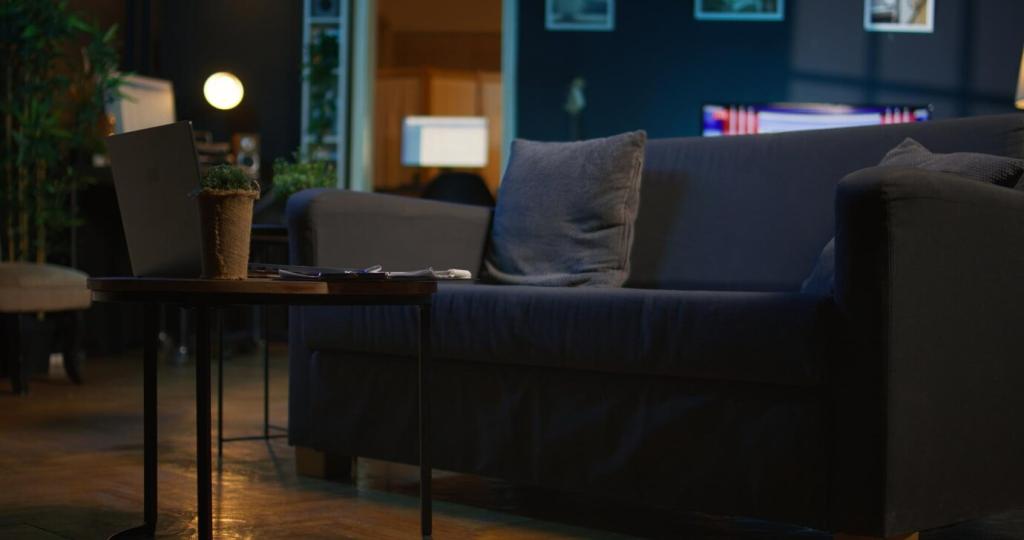Simplifying Your Home: A Guide to Minimalist Living Spaces
Minimalist living isn’t just a design trend—it’s a way to create a more intentional, peaceful, and functional home. By reducing clutter and focusing on what truly matters, you can cultivate a space that feels open and calming, improves well-being, and supports your lifestyle. In this guide, we’ll explore the philosophy and practical strategies behind minimalist interiors, helping you simplify your living spaces without sacrificing personality or warmth.
Understanding Minimalism in Home Design
The Philosophy Behind Minimalism
Minimalist design is rooted in the principle that less is more. Rather than filling rooms with objects that serve no real function, minimalism challenges you to keep only what adds value to your life. This approach fosters clarity and focus, turning your home into a haven that encourages reflection and presence. Simplicity doesn’t mean emptiness—it means making thoughtful decisions about what you allow into your space and why.
The Benefits of Simplifying
Paring back possessions and streamlining your home carries both psychological and practical benefits. A less cluttered environment has been shown to reduce stress and promote mental clarity. With fewer items to maintain and organize, daily chores become easier, freeing up time for what truly matters. Minimalist living prioritizes quality over quantity, leading to higher satisfaction with the things you do own and the spaces you inhabit.
Common Misconceptions
Many assume that minimalism requires cold, stark interiors or sacrificing personality for order. In truth, minimalist spaces can be warm, inviting, and rich in character. The goal isn’t deprivation, but refinement—choosing pieces, colors, and textures that resonate with you. Minimalist homes reflect their owners’ tastes, values, and stories, proving that simplicity and individuality can coexist beautifully.

The Decluttering Mindset
Approaching decluttering requires a shift in thinking. Rather than asking what you’re willing to part with, consider what truly deserves a place in your life. This involves honest reflection about your needs, habits, and emotional attachments. Recognizing the difference between want and need can be challenging at first, but embracing this mindset gradually builds confidence in letting go and creates lasting change.
Sorting by Function and Joy
Effective decluttering often involves two guiding principles: function and joy. Keep items that serve a clear purpose or spark genuine happiness. This means evaluating the role each possession plays—does it support your routines or aesthetic preferences? Pausing to consider these factors helps weed out duplicates, outdated pieces, or items that no longer align with your lifestyle, making space for what matters most.
Creating Lasting Habits
Decluttering is not a one-time event but the foundation for an ongoing minimalist lifestyle. Establishing regular check-ins—such as seasonal reviews—can keep your space organized and clutter-free. Adopt daily habits like putting things away promptly or being mindful when bringing new items into your home. These routines reinforce simplicity, reduce the likelihood of clutter returning, and sustain the calming benefits of minimalist living.
Choosing Minimalist Furniture
Quality Over Quantity
Opting for fewer, higher-quality pieces ensures that each item in your home serves a purpose and stands the test of time. Well-constructed furniture not only looks beautiful but also enhances functionality, making daily life smoother and more pleasant. Investing in versatility and craftsmanship reduces the need for constant replacements, aligns with sustainable values, and brings a sense of pride and comfort to your space.
Prioritizing Multi-Functionality
In minimalist living spaces, furniture that performs more than one function is highly valued. Think of sofas with hidden storage, tables that can be extended or folded, or beds with integrated drawers. Multi-functional pieces allow for greater flexibility and adaptability, especially in smaller homes or apartments. This approach ensures your rooms remain open and uncluttered, while still providing all necessary functions for modern living.
Selecting Statement Pieces
Minimalist design doesn’t shy away from bold furniture choices—it just means being more deliberate. A single statement piece, like a sculptural chair or elegantly designed table, can add character and act as a focal point. By limiting the number of major items, each one gains importance and contributes to the overall harmony of the space. Thoughtful selection ensures your home remains visually interesting without becoming overcrowded.
Color Palettes for Calmness
Neutral tones—such as whites, beiges, and soft greys—form the foundation of most minimalist interiors. These colors reflect light, make rooms feel more open, and allow architectural details or statement pieces to stand out. Neutrals offer versatility, accommodating a variety of accent colors and textures. Their calming effect can help reduce mental fatigue, making your home a restful haven after a busy day.
Window Treatments That Enhance Light
The choice of window coverings can dramatically influence how much daylight your home receives. Minimalist spaces benefit from sheer curtains, light-filtering shades, or even bare windows when privacy allows. These treatments diffuse sunlight, reduce glare, and maintain a sense of openness. By keeping windows uncluttered and clean, you maximize the feeling of airiness and connection to the outdoors.
Arranging Furniture for Illumination
Furniture placement can either obstruct or enhance the flow of light. To make the most of natural illumination, arrange seating and tables to avoid blocking windows. Use reflective surfaces—such as glass, mirrors, or light-colored finishes—to bounce daylight deeper into rooms. Thoughtful configurations maximize both function and brightness, helping your minimalist home feel welcoming from sunrise to sunset.
Previous
Next
Thoughtful Storage Solutions
In a minimalist home, concealed storage solutions play a starring role. Consider built-in cabinetry, under-bed drawers, or storage ottomans that double as seating. Keeping belongings out of sight reduces visual noise and supports a tidy appearance. These discreet options help maintain the streamlined look of each room, while ensuring that everything you need has a designated home.
Infusing Warmth and Personality
Texture adds dimension and comfort to minimalist interiors. Layering materials—such as natural wood, soft linens, or tactile ceramics—brings depth to rooms that might otherwise feel flat. Even within a neutral palette, different finishes catch the light in unique ways, inviting touch and visual interest. These subtle variations make your home both soothing and inviting, offering richness without visual chaos.
Displaying art, photographs, or personal objects connects your home to your identity. In minimalist spaces, curation is key: Choose a few meaningful pieces rather than filling every wall. This approach gives each item the space to breathe and be appreciated, turning art and memories into focal points rather than clutter. Your home remains tranquil, yet unmistakably yours.
Ambience is about more than what you see. Introducing calming scents—like fresh-cut flowers, essential oil diffusers, or lightly scented candles—adds a welcoming dimension. Soft background music or the gentle hum of nature sounds can foster relaxation and focus. These small details enrich your environment, engaging the senses and transforming minimalist spaces into nurturing retreats.

